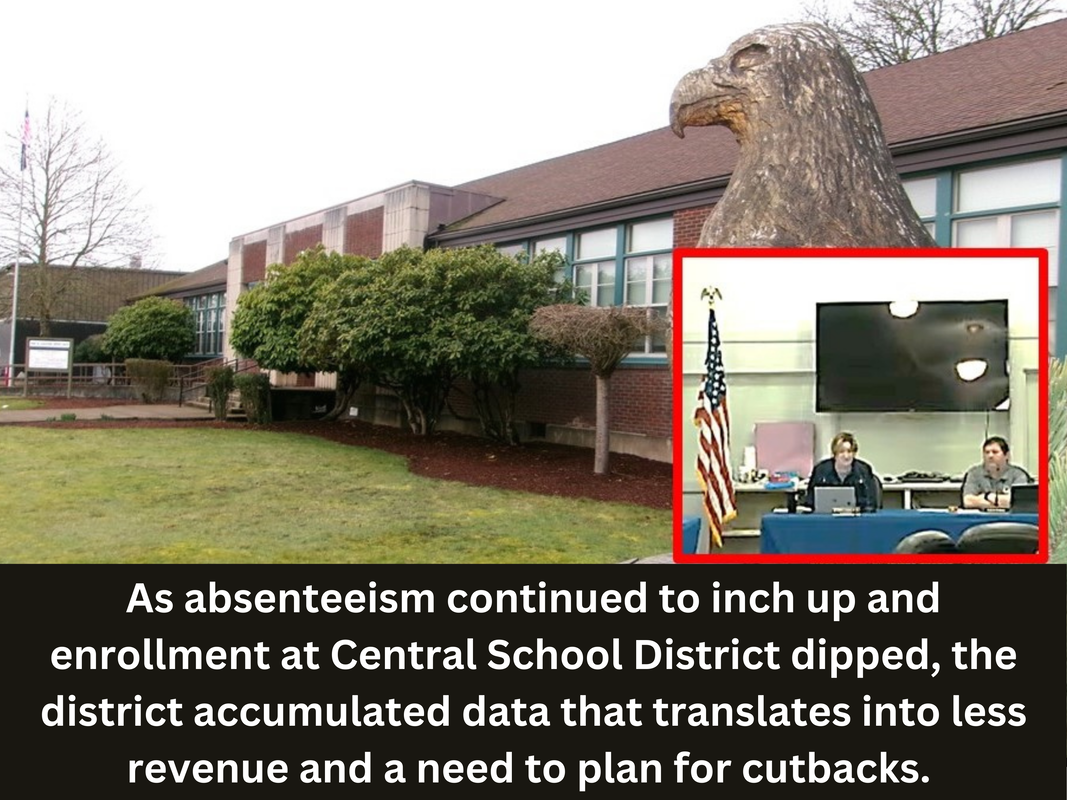City Council votes to delay decision on Corvallis Road annexation
By Anne Scheck
Trammart News Service, April 11, 2025
A plan by Independence to annex Corvallis Road south of the city limits was postponed Tuesday night after adjacent property owners protested that the proposal raised bewildering questions and baffling answers. The move eventually will include what is known as a "jurisdictional transfer," which would place the road into city oversight. Corvallis Road is currently maintained by Polk County.
Independence city councilors voted unanimously to extend the hearing on the issue to May – the hearing drew about a dozen residents who reside by Corvallis Road inside the city’s urban growth boundary but not within the city limits.
In giving their testimony, many along Corvallis Road said they feared there’s more than simply road annexation at stake, including the possibility of future zone changes, tax increases and the loss of their rural lifestyle.
Noting that five generations of Henry Hill’s descendants have lived on property still owned by his family, Eric Hill called the letter he received about the Corvallis Road annexation “ambiguous.” Hill and others wanted to know if expansion beyond the road was under consideration, too.
If it is, that would raise taxes by $3,000 annually for her property, said Michelle Lewis, adding that, with her husband’s retirement looming a few years ahead, the increase would be hard to bear.
Lewis noted that several years ago an attorney was hired to ward off an annexation effort by the city.
Mike Brown, who farms land on Corvallis Road with his wife Carol (photo to upper right), told councilors he was worried about the “farm deferral” for his land, where the couple grows blueberries and apples.
Portions of Corvallis and Hoffman roads, as well as a part of the old 6th Street, were part of the annexation proposal. However, it was the annexation of Corvallis Road that seemed to worry the crowd of meeting attendees.
Though City Planning Manager Fred Evander reassured those at the meeting that there were no plans for broader annexation, urban growth boundaries serve to show where city limits are likely to extend. “Each Oregon city is surrounded by an urban growth boundary, a line drawn on planning maps to designate where a city expects to grow over a 20-year period,” according to an Oregon state advisory on land use. The growth can occur in ways that range from new houses to industrial facilities.
Several attendees said the annexation of Corvallis Road looks like a first step.
City Councilor Marilyn Morton, apparently responding to those fears, suggested a letter from the city to reassure residents no future annexation beyond the right-of-way on Corvallis Road is planned. Evander agreed to write the letter.
But some answers by Evander to those who testified proved confusing: they were stymied about why the city wanted to take on the added expense of street maintenance for a roadway currently under the county’s care.
Evander explained that the right-of-way annexation for Corvallis Road would allow the city to make certain the roads met the current standards of Independence, as well as to control speed limits and set safety zones.
“It is all about the roadway,” confirmed City Manager Kenna West, who also alluded to an intergovernmental agreement with Polk County for a water main line along the route, in preparation for a water treatment plant in the vicinity.
The city needs “to be consistent with the intergovernmental agreement between Polk County and the City of Independence for the management of the Independence unincorporated Urban Growth Boundary,” according to the report provided to the Independence City Council.
News that the annexation was needed to fulfill an agreement with Polk County prompted City Councilor Dawn Roden to cite that as a reason some property owners might be “hesitant”; The factors for annexation seemed to go from revising speed limits to a city-county IGA regarding a water line.
A resident agreed with Roden, calling it “kitchen sink-ism” that was hard to grasp.
County officials who were asked about the issue appeared reluctant to address it without more specific information on the annexation – the application for jurisdictional transfer of Corvallis Road from the county to the city hasn’t yet been received by the county.
In fact, a hearing this week on jurisdictional transfers by the Polk County Board of Commissioners raised questions, too.
Jurisdictional transfers are a complicated process that need more clarity, asserted Commission Chair Craig Pope.
"I want to have that opportunity," Pope said. "I'd love to find ways to clean things up," concurred Commissioner Jeremy Gordon
At the board of commissioners meeting, Talmadge Road in Independence was exempted from the discussion and inquiries about Hoffman Road were tabled.
Like the meeting in Independence, the county commissioners delayed their hearing until May, as well.
For jurisdictional transfer to occur, the road – whether whole or up to the center line of the road – must reside within the city limits of the city, according to Polk County Administrator Greg Hansen. “Once that condition is met, then the city can request jurisdictional transfer,” he added. ▪
City council votes to accept the audit for the fiscal year ending June 30, 2024
By Anne Scheck
Trammart News Service, April 11, 2025
The recent city audit shows debt that is old, new and misclassified.
The old listing: MINET’s “doubtful account” remains, a debt of more than $4.1 million, which accumulated over the years when the municipal fiberoptic company was unable to make its bond payments and borrowed from the city to do so.
The new debt: Independence failed to properly track over-spending in nearly a dozen categories, though it remains difficult to sort out how much of that is actually true debt. There was about $715,000 in expenditures that exceeded appropriations. Even though the funds in which these over-expenditures occurred may have had sufficient money to cover the overages, they weren’t handled appropriately.
They should have been placed in a “supplemental budget” rather than recorded simply as over-runs, according to the auditors.
The mis-classified debt: Transactions were called inter-fund loans when they should have been labeled as debt service.
The audit was presented to the Independence City Council by Rob Moody, the city’s finance director, and Cyrus Ward, of Aldrich CPAs and Advisors LLP in Salem.
Though the auditors spotted several findings that were flagged as falling short of minimum accounting standards, they didn’t necessarily reflect a serious book-keeping issue, Ward said. He pronounced the city as having a “clean” audit, despite these lapses, which were similar to those seen in other municipalities.
Moody told councilors that the inter-fund loans have been corrected for the 2025-26 budget document. As for the over-expenditures, “we’ll just own those,” Moody said. “We’ll do everything we can to try to monitor those.”
Moody added that this effort will be “stepping up our game a little bit.”
The audit, for the fiscal year ending June 30, 2024, was approved unanimously to be accepted by the city council. It was signed by the auditing firm representative on March 31, 2025.
Ordinarily, municipal audits are due by January 1 to the Oregon Secretary of State, but Independence requested and obtained extensions for filing the financial statements. The city reported that several factors contributed to the delay, including limited staff availability in the finance department over the last several months.
(Note: During the council meeting Finance Director Rob Moody reported that full payments are being made on the debt for the Independence Civic Center. Trammart News has requested a record of those payments.) ▪
13J School District facing likely budget cuts in 25-26 school year
By Anne Scheck
Trammart News Service, April 11, 2025
Central School District finances have been dealt a new blow. An increase in absenteeism and a reduction in enrollment, among other setbacks, mean reimbursement revenue is headed down – making it necessary to plan for cuts.
“Although this is hard, we will have to move forward with cuts,” said CSD Superintendent Jennifer Kubista ( in photo to right) in her report at the school board meeting Monday night. Because funds from the legislature are still in flux, the fiscal picture could change, she said.
However, plans need to be made for cutting personnel costs and paring down programs, Kubista said, noting that personnel comprise the lion’s share of the school budget.
The "regular attenders" rate of students – as defined by attendance of 90% during the school day – decreased by 5% this year, to 62% of the student body. Enrollment dipped below 3,000 students, a downturn from last year. Both could mean a significant loss of state revenue.
The current expectation based on the data: District trimming will be needed across the board.
Other costs have risen significantly, but only a 3.3% increase is anticipated to this year’s budget due to the enrollment and attendance drops, Kubista explained, among other factors. PERS obligations continue to climb, and so do certain other costs. For example, the district is getting 28 cents of reimbursement for each dollar spent this year on high-needs special education; That's down from about 40 cents to the dollar last year, according to CSD figures.
High-needs special education often requires assistive technology, extra time of personnel – including an assigned aide – and possible addition of special mobility accommodations. Several in CSD, including teachers and staff, have expressed worry that some federal money will dry up due to changes at the federal level under the current presidential administration.
How much strain is likely to result? It is "hard to predict," said Nathan Muti, who heads the teachers' union and was at the meeting when the announcement was made. Updates are anticipated throughout the spring as the state legislative appropriations become clearer, Kubista said. ▪




 RSS Feed
RSS Feed